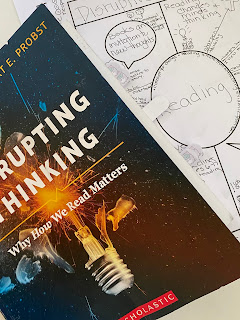Disruptive Thinking
Chapter 15 of Disruptive Thinking is entitled The Power of Talk. Beers and Probst discuss the difference between in monologic and dialogic questions. Monologic questions have a right or best answer. They require the student to pay attention to the text. They remind me of closed questions - questions that you answer with a yes, no, and/or a fact. Dialogic questions have no easy answer. They entertain discussion. Students don't know the answer question because there is no correct answer. In addition, they require the student to look for evidence to support their answer. They also automatically compel the student to answer the question in a complete sentence. To me, they remind me of an open ended question. Questions like what surprised me about the text? What did the author think I already know? What challenged my thinking from reading the text? Did reading this text change my mind/opinion?


Comments
Post a Comment